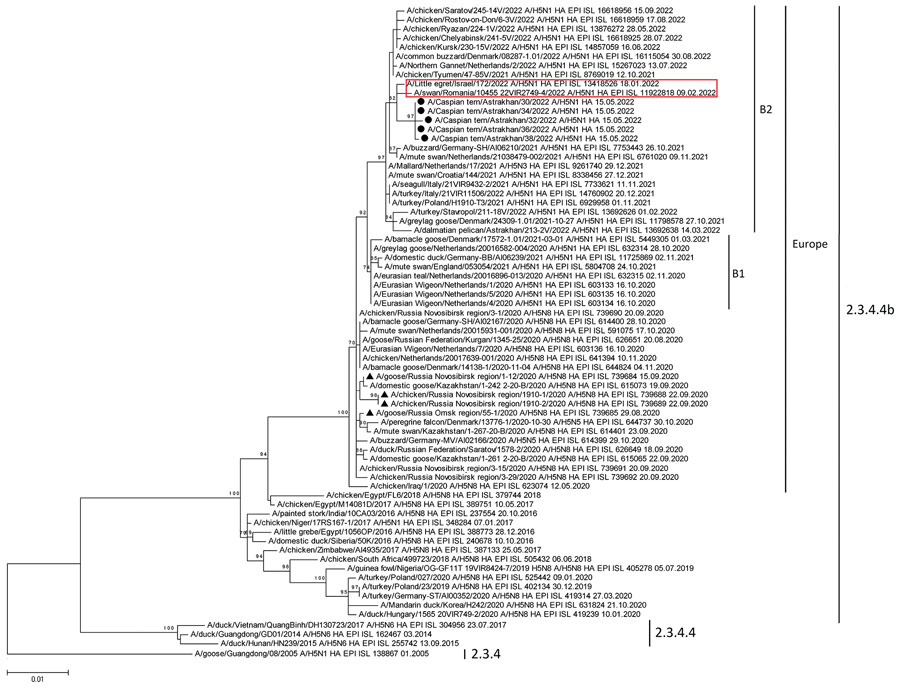Highly Pathogenic Avian Influenza A(H5N1) Virus–Induced Mass Death of Wild Birds, Caspian Sea, Russia, 2022
Ivan Sobolev

, Alimurad Gadzhiev, Kirill Sharshov, Olesia Ohlopkova, Kristina Stolbunova, Artem Fadeev, Nikita Dubovitskiy, Alexandra Glushchenko, Victor Irza, Maxim Perkovsky, Kirill Litvinov, Natalia Meshcheriakova, Guy Petherbridge, and Alexander Shestopalov
Author affiliations: Federal Research Center of Fundamental and Translational Medicine, Novosibirsk, Russia (I. Sobolev, K. Sharshov, O. Ohlopkova, K. Stolbunova, N. Dubovitskiy, A. Glushchenko, A. Shestopalov); Dagestan State University, Makhachkala, Russia (A. Gadzhiev); Smorodintsev Research Institute of Influenza, Saint Petersburg, Russia (A. Fadeev); Federal Governmental State-Financed Institution Federal Centre for Animal Health, Vladimir, Russia (V. Irza); Astrakhan State Biosphere Nature Reserve, Astrakhan, Russia (M. Perkovsky, K. Litvinov, N. Meshcheriakova); Caspian Center for Nature Conservation, Makhachkala (G. Petherbridge)
Main Article
Figure 2

Figure 2. Phylogenetic analysis of viruses isolated from 5 dead Caspian terns in study of highly pathogenic avian influenza A(H5N1) virus–induced mass death of wild birds, Caspian Sea, Russia, 2022. Maximum-likelihood phylogenetic tree was constructed for hemagglutinin gene segments. Black circles indicate highly pathogenic avian influenza (HPAI) A H5N1 virus strains isolated from the Caspian Sea region; black triangles indicate Egyptian-like HPAI virus strains from Russia isolated in 2020; red box indicates HPAI strains from Israel and Romania that were closely related to viruses from the Caspian Sea. Viruses belonging to clade 2.3.4.4b and B1 or B2 sublineages and those with hemagglutinin genes found in Europe are indicated. Sequences were obtained from the GISAID EpiFlu database (https://www.gisaid.org); identification numbers are provided. Scale bar indicates nucleotide substitutions per site.
Main Article
Page created: September 28, 2023
Page updated: November 18, 2023
Page reviewed: November 18, 2023
The conclusions, findings, and opinions expressed by authors contributing to this journal do not necessarily reflect the official position of the U.S. Department of Health and Human Services, the Public Health Service, the Centers for Disease Control and Prevention, or the authors' affiliated institutions. Use of trade names is for identification only and does not imply endorsement by any of the groups named above.
